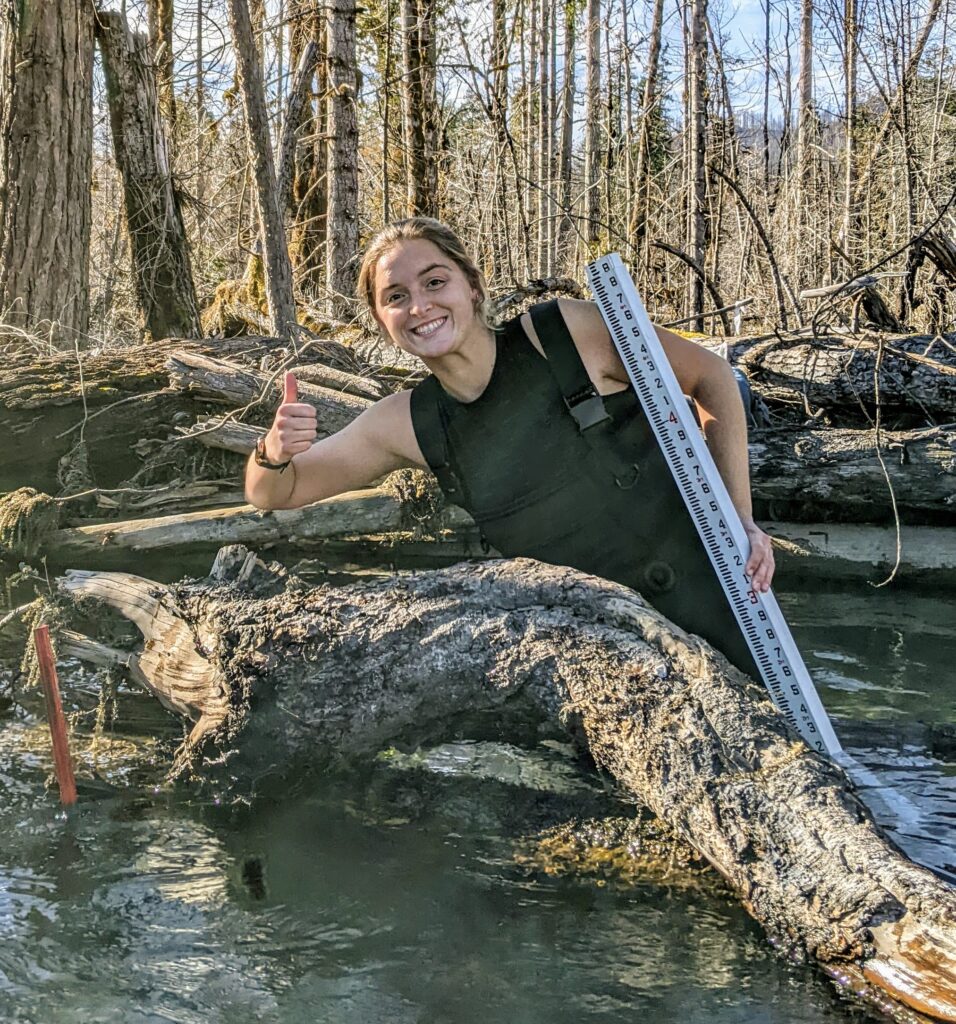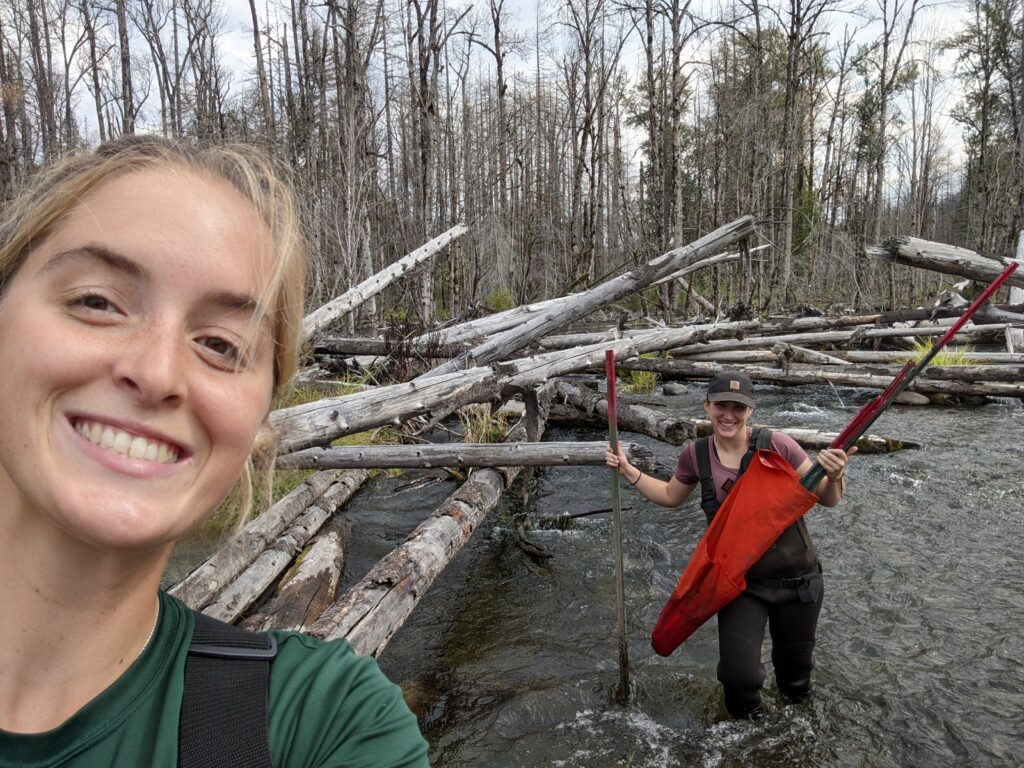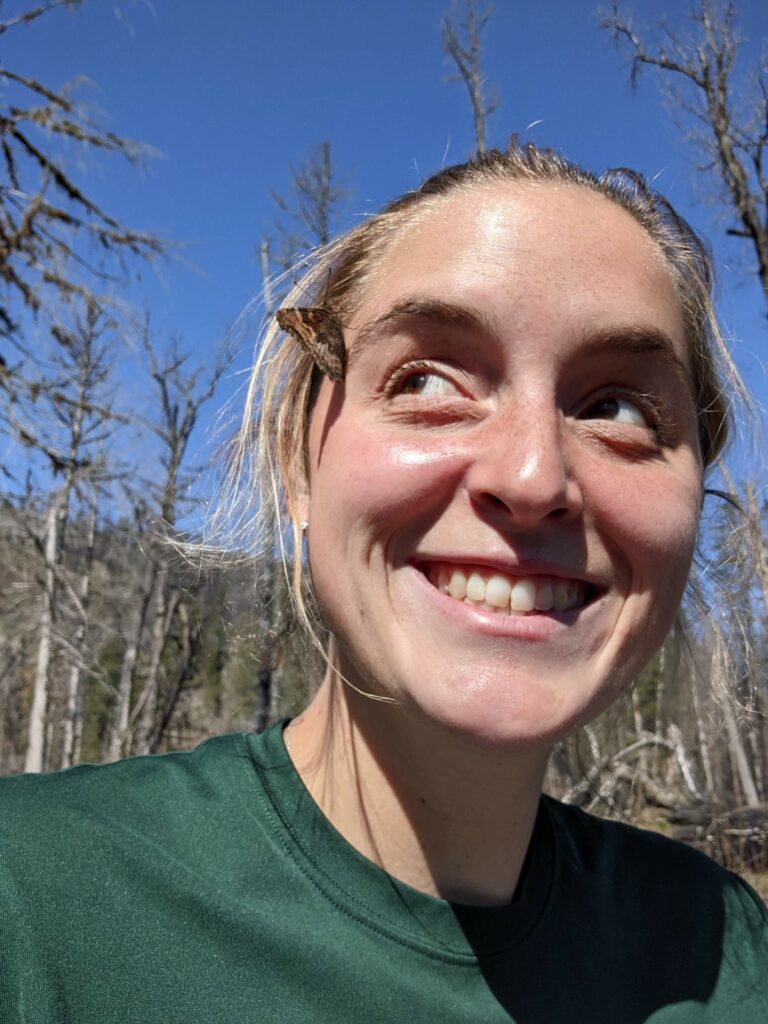Aleah Hahn, Marine Resource Management Student

Flashback to my childhood: I am maybe 8 years old, wearing some worn out hand-me-down clothes from my brothers. I put on my trusty light blue crocs and callout to my mom, “I’m going to go play in the woods!” Stumbling through the leaf litter and sticks and fallen trees, the cold, wet, yuckiness of a Michigan fall does not phase me. I climb up the hill to my favorite spot. The sun decides to come out and light up my small patch. The birds are excited about the sun, too, so I sit and watch them play. I get distracted by a worm wriggling into the ground and giggle in awe of all the life around me. I am in my own slice of paradise.

I have always found myself connected to the outdoors. Whether swimming in the nearest body of water, going for a hike in the woods, or catching a bluegill in the creek, nature is where I am happiest.
Now, I am 22 years old, and for the past year I have been playing in a river –I mean, working on data collection for my master’s thesis.

My research site is east of Eugene, OR and sits below Cougar Dam. I am looking at a new approach to river restoration and trying to understand how different habitat qualities might impact the spawning and rearing of Chinook salmon. Before treatment, the river was not connected to its floodplain, the nursery habitat for juvenile Chinook. Treatment reconnected the river once again to its floodplain. The model I am using requires me to understand how fast the water moves and how deep it is before and after treatment. A team of five undergraduates and I collected that data, monitoring an untreated section of river upstream of the treatment area and regions in the treated area.
I have traded in my crocs and hand-me-downs for wading boots and thick neoprene waders. The waders were helpful when bushwhacking through stinging nettle, blackberries, salmonberries and virtually everything pokey in the world. If it is pokey, I found it, I probably grabbed it, and I most definitely learned my lesson.

My fieldwork involved walking on large wood placed throughout the river. When I began the work, I was slow and cautious, but by the end of the summer, I had to remind myself to slow down so my undergraduate helpers could keep up.
The weather and field conditions were not always the most pleasant to work in. I don’t recommend trying to get through stinging nettle taller than yourself –their radiating sting is unpleasant. Sticking my arms and face in the chilly water to retrieve sensors and replace them, doing my best, unsuccessfully, to keep the water from pouring into my waders, is, again, not recommended.
But during all the unpleasantness, I was truly living my best life. Some of the most uncomfortable parts of life can be the most enjoyable; it is all about perspective. I would rather have a bad day in the field and breathe in the fresh (well, sometimes smoky) air, see the life booming around me, and connect with nature, than have a mediocre day in the office. My favorite memories are of the times when we simply stopped and let the view in. The treated area was always busy with birds, butterflies, and fish. I would pull a rock out of the river and show my students the different macroinvertebrates crawling around. The ability to find life in all corners and crevices of the site excited my inner child.

Being at my study site reminded me of those days in the woods as a kid. It was MY place, my little slice of paradise. It also showed me that I didn’t have to do research to go out to the woods and frolic. So even though my field season has ended for my master’s project, you will always be able to find me revitalizing my soul out in the woods somewhere.


What a fabulous reflection, Aleah! I’m sure you are inspiring others to get out in the woods, muck around in the creeks and rivers, and pause to take it all in. Ahhhh! Beautiful!
Oh Aleah! This blog brought tears to my eyes. I cannot tell you how much I love this. You are so in your element and it’s so touching to hear how much you love it, not to mention your pictures! Priceless!
Aleah, the river seems to have a great amount of downfall.. does this inhibit fish migration? Is the river free of damns from your location downstream?? The flow sure looks sufficient to clean out sediment…. What you are doing reminds me of restoring Trout stocks in the NC foothills…… Please keep us updated!!